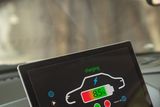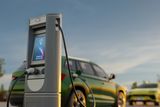Scandal of our 'death trap' cars - another 1,500 found by NCT
How can we continue to drive vehicles that should not be on our roads under any circumstances?
National Car Testing centre
It is hard to believe that hundreds, if not thousands, of cars are being driven - every day - that should not be on the road under any circumstances.
That is the stark reality from latest figures. They show 1,431 such vehicles were discovered during NCT tests in the first quarter of this year alone.
Last year, 5,624 of what are called 'Fail Dangerous' vehicles were discovered in the course of the national test.
There appears to be no let-up in the numbers falling into that category.
Even allowing for increased frequency of testing (most are over 10 years old and therefore must have an NCT every year) it is difficult to fathom how and why so many are allowed to become so exceptionally dangerous.
It is hard to over-emphasise just how serious a scenario this represents. And it makes you wonder just what can be done to get it into people's heads that they are driving potential death traps.
They are not only endangering their own lives, but those of anyone - and I mean anyone - they meet.
Being labelled Fail Dangerous means a car is in such bad repair in one way or another that it is a major risk and should not be driven under any circumstances.
How much more perilous can they be when test-centre officials advise owners to have them towed - rather than driven - away?
Most people do. Some do not. Imagine meeting them on the road.
Hazardous
The NCT people also put a special sticker on the windscreens of such cars to underline their hazardous status.
Indeed, officials even go to the trouble of reading a special statement to each owner. In doing so they detail how and why the vehicle is potentially lethal.
And yet the core question remains: How can anyone turn up to have a car tested in such condition?
Here's just a brief list of what a typical Fail Dangerous car can have:
* Bulging, bald or unevenly worn tyres
* Badly-corroded bodywork - in other words the car is structurally dangerous
* Flawed lines or hoses leading to brake-fluid leaks
* Doors that are so much out of alignment with the car's body that they won't close properly
* Frayed, or worn, fuel hoses dripping petrol onto hot areas of the engine, posing a real fire risk.
Yes, there are owners out there - maybe not far from you - taking that sort of risk. That, I think, is the truly frightening thing about these figures.
Without in any way trying to be either preachy or alarmist, the fact is that anything could happen at any time to one of those vehicles.
They could suffer a blow-out, go on fire, veer out of control etc.
That would be bad enough, God bless us, if no others were involved. But what if there were? Then we are left with even more lives shattered by injury and/or death.
On page two today, our Road Safety Association expert outlines the major reasons for failures. Please read them and check your car for such faults.
Let us know what you think: ecunningham@independent.ie
Join the Irish Independent WhatsApp channel
Stay up to date with all the latest news














